Abstract
For architects and planners to build healthy post-pandemic environments, they need to deconstruct what it means to design and build in the age of capitalism. This commentary discusses how the pandemic is reshaping the social nature of our cities and buildings and the post-pandemic prospects of real estate and the built environment. Then, it runs through various proposed planning and architectural; active and passive measures to mediate the pandemic and manage infection risk in the built environment. Finally, the article reflects on what these proposals mean to neo-liberal real estate markets—the most critical driver of our developments today—and how each of us might help all of us gain from better-built environments.
A scan of posts on social media at the start of global quarantines shows not only how shortlived people hoped the pandemic lockdown periods were going to be but also how everyone hoped for normalcy after the pandemic. People would say: “When this is done, we will get together and…” What the posts show is hopeful denial. The coronavirus pandemic has opened a portal to a strange, unknown world into which we can peer, but which we, as a society, refuse to step into.
The uncertainty of our post-pandemic future gives rise to two things. Inertia—the wish for things to remain as they are, often for fear of losing what has already been gained. The second is the opportunity of new ground, a tabula rasa or clean slate, on which one may stake a claim, hold, and defend. Both states create a void that is quickly filled by different voices and narratives.
Bull’s and bear’s post-pandemic projections
Economists and investors offer vastly different post-pandemic projections. Some optimistically recall past crises and point out how the world—or at least, the Philippines—bounced back (Leechiu, 2020). They bullishly project a return to normalcy from a short-term recession once quarantines are lifted and vaccines become widely available.
On the other hand, other economists and investors (Noubini, 2020; Dalio, 2020) are bearish, predicting a long-term depression and calling the pandemic a moment for the existential re-examination of global capitalism. They view each crisis as an opportunity to look beyond our current context and limitations, and to leapfrog, not just to what could be, but what should be for all.
Both optimists and pessimists drive at the fundamental essence of being part of society: the human need for social exchange and communication makes us want to be with others and to trade. But what post-pandemic social exchange and trade will be like remains to be seen, as we are forced to continue distancing ourselves from each other, in fear of a second wave.
The built environment forms our social network
The abrupt desertion of the world’s cities during the global quarantines proves that the urban built environment is our most primordial, fundamental social network. Our streetscapes, offices, classrooms, malls, and parks are interconnected spatial venues for co-presence. These form the physical and spatial network that allows us to build the connections and ties that make up our social networks (Hillier and Netto, 2002) (See Fig. 1).
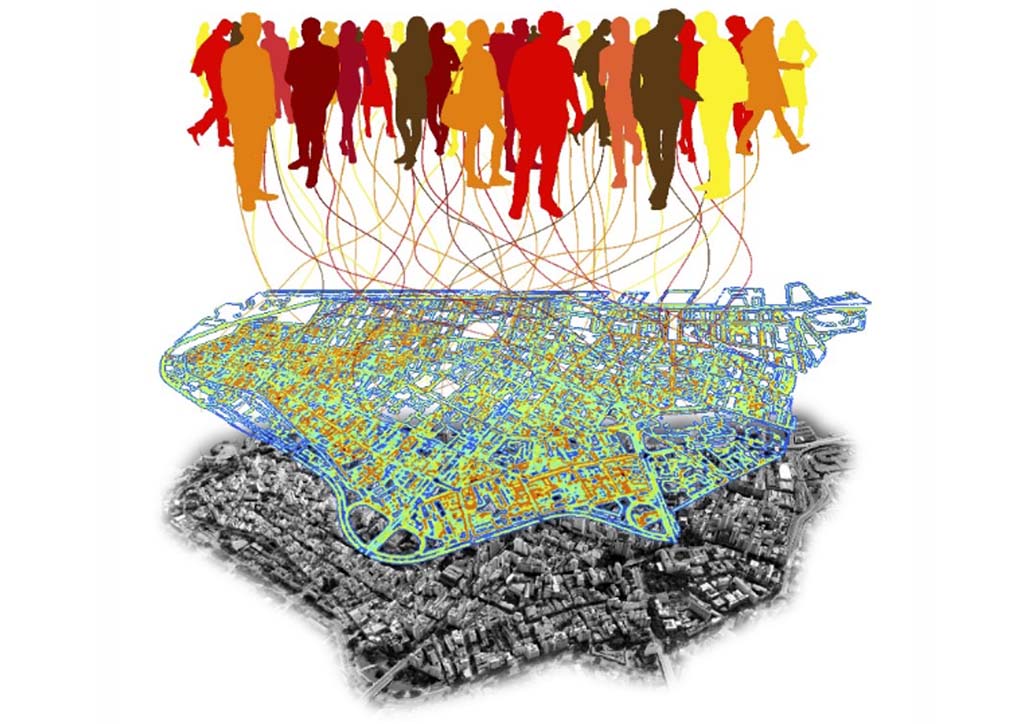
Of course, the rise of virtual social networks has changed our social behaviors. We make numerous contacts online, transcending space (even time), and formalize some of these in the real world. From this, one can see “social distancing” is a misnomer. We are fighting the virus not by being social recluses, but by shifting from a physical and spatial world into a trans-spatial world of interactions (Stonor, 2020).
Proposals aplenty on post-pandemic planning and architecture
This shift to the trans-spatial has sparked architects and planners to offer their thoughts on post-pandemic built environments and how we ought to reconfigure them for future pandemics. I am one with urban planners and policymakers who can’t help but feel that the object of our collective advocacy—the city, with its density, vibrancy, and connectivity—is under attack. The pandemic is a lens that magnifies the scale and complexity of our cities’ socio-spatial problems, particularly acute in Metro Manila and other major cities in the Philippines.
Our brothers and sisters who live in informal settlements or slums are marginalized by both the market and government policy. They are forced to live lives condensed into little pockets and slivers of unplanned and un-programmed space. These are the retaso (leftover, remnants) and napaglumaan (timeworn and abandoned) patches of our built fabric. Without public open space, relief, amenity, or running water, dwellings cheek-by-jowl, susceptible to floods, and inaccessible due to inefficient mass transit. One fears the catastrophic damage the pandemic would cause if it touches these settlements (See Fig. 2).
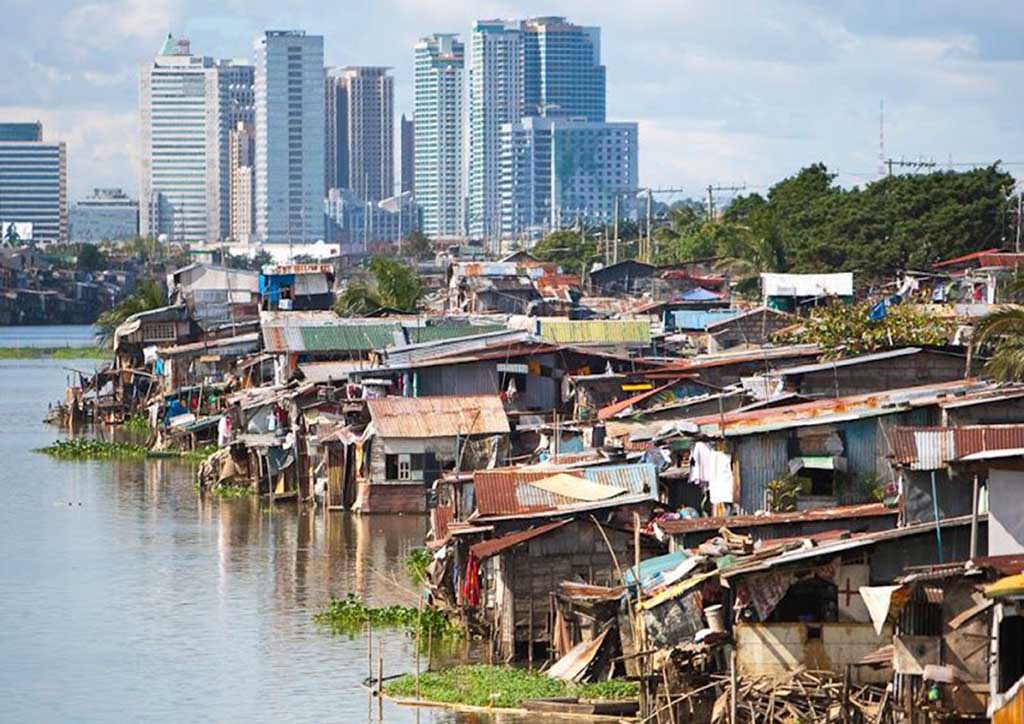
READ MORE: Reopening during a pandemic: Are architects ready for the new normal?
Response: Balik-Probinsya
Emerging planning and policy responses to the coronavirus contagion and future pandemics include top-down measures, the highest coming from the national level. The Philippine government proposes a Balik Probinsya (back to the province) program to “decongest” these slums by returning residents to their original hometowns, and enticing businesses and industries to relocate to these areas.
The policy means well, but many housing relocation programs have failed miserably precisely for failing to transfer jobs, services, transportation, and amenities to the far-flung ex-urban relocation sites (See Fig.3). One must ask: Who is the city for? And ultimately, who has “the right to the city” (Lefebvre, 1968)?
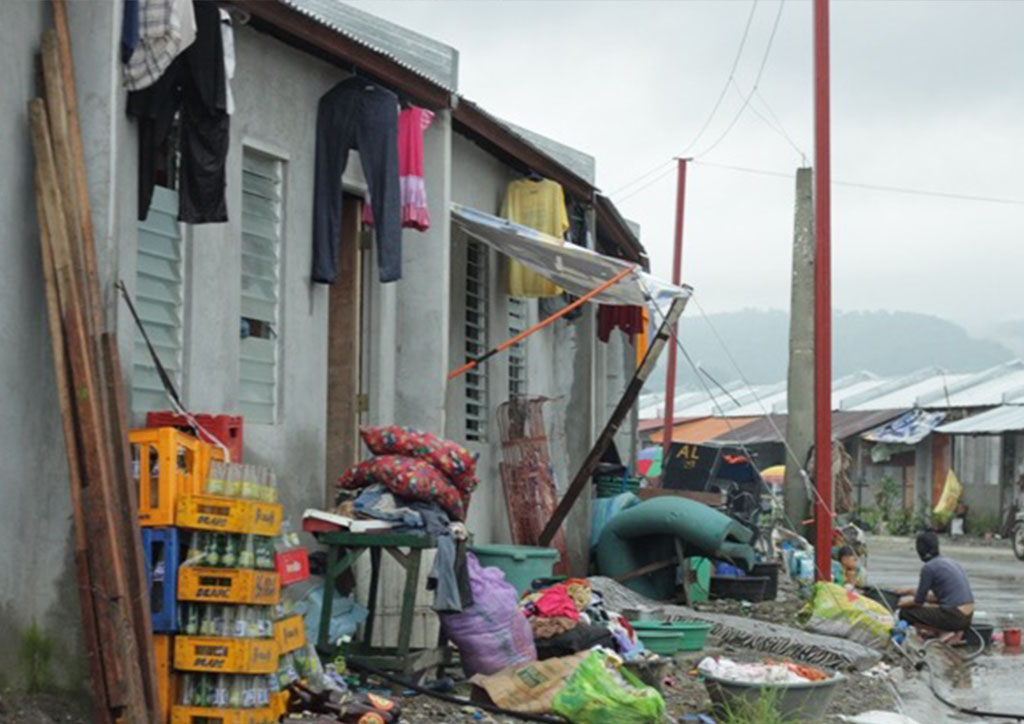
Response: Compact, polycentric healthy cities
Envisioning our post-pandemic future, master planning consultants (SOM, 2020) say we need to reconfigure our metropolis into polycentric “healthy cities.” These are compact, self-sustaining “Live-Work-Play” townships with residences, schools, offices, businesses, and services, all within a 15-minute circle of travel, preferably on foot or public transportation.
This idea is not new, as many private master-planned vertical townships and enclaves are configured in this format. A monoculture of white-collar jobs, clean and orderly surroundings, with retail and shopping as the glue holding density together. One cannot be faulted for perceiving the “Healthy City” label as the same brand to pitch such concept cities as the Aerotropolis, the Garden City, etc. We see these in various urban developments in China and the Middle East, e.g., Tianjin Eco-City. (See Fig. 4)
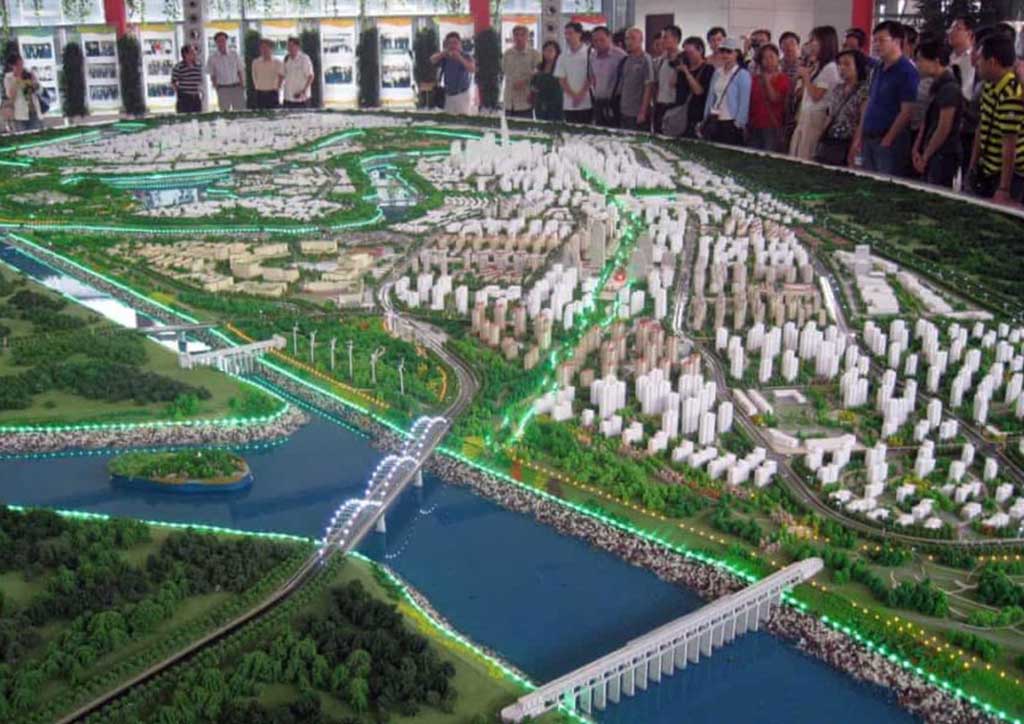
Response: Post-pandemic Corbusian copies
For their post-pandemic proposal, a young firm harkened to past urban planning proposals, citing grand visions similar to Le Corbusier’s towers-in-a-park scheme. (See Fig. 5, Corbusier’s Plan Voisin for Paris, named after the car company that sponsored it.) Devoid of active street life, the proponent offers it as a solution to the problem of urban density.
This and others like it are rehashes of tried and failed typologies, responsible for the socialist dystopias of Eastern Europe. To plant vertical edible greenery and recast them as a new solution for current problems is myopic and blindered. It may be forgiven for being unexposed to urbanism discourse as it has evolved in the decades since Corbusier. Don’t get me wrong. Corbu was a brilliant architect, but an awful planner and urbanist.
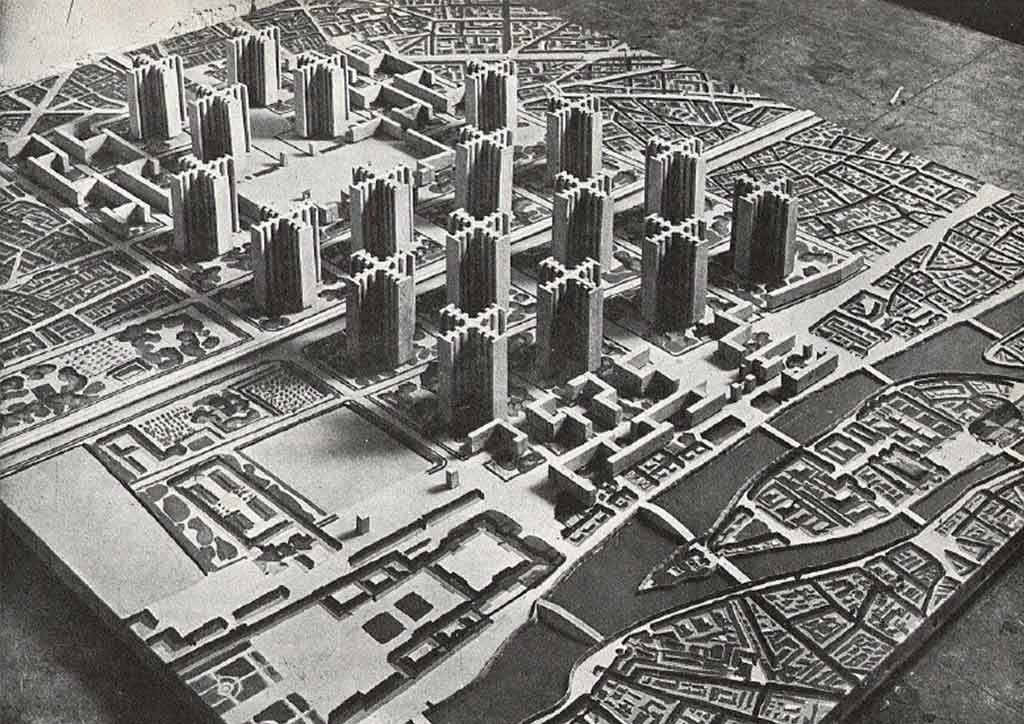
The forgotten ones
One must ask what these post-pandemic visions don’t address. How about those outside these masterplanned townships and communities? Those who have to commute far to get to work in these townships? Can’t they reconfigure where they live to be self-sustaining live-work-play settings as well?
Enormous slums have formed outside of Brasilia and Chandigarh, two of the most renowned Corbusian modernist planned cities. The similar rise of informality beside our own CBDs (See Fig. 6) testifies to the private and public sector’s failure to address the holistic labor needs of cities.
Cities cannot work without a resident working-class population, just as society cannot run without essential and frontline workers. To plan and design only for those who can afford is no different from applauding front-liners while forcing them to walk long distances home because of the quarantine transport shutdown.

How about the carpet of working-class, middle-class, and high-end exclusive subdivisions and villages that form most of Metro Manila and CALABARZON? Will residents allow their quiet suburbs to be retrofitted into something more walkable, more—dare I say it—urban?
Is Live-Work-Play in the suburbs only a car-scaled vision? Could a wellspring of residents realize that their lifestyles have only been enabled by their reliance on the car (see Fig. 7), the polluting effects of which their ‘green’ homes and technologies are trying to offset? When will they realize they are fighting a fire with a bottle of fancily packaged, absurdly priced Fiji water?

Response: ‘Unmotored’ mobility
Then there are the bottom-up proposals to problems brought on by the government’s muddled response to the pandemic. One of the first steps taken as part of the quarantine orders was the shutdown of general public transport. Cycling, commuting, and alternative mobility lobby groups, such as Alt Mobility Coalition, who have been pushing for pop-up bike lanes, saw an opportune time to lobby for a permanent, protected bike lane network and infrastructure, wider sidewalks, and pedestrian shelters.
Their unified purpose of providing people of all classes the ‘unmotored’ agency to bike and move around sans fossil fuels before, during, and post-pandemic is admirable. We should support them. The struggle is not just in persuading leadership, but also the many gated villages surrounding Metro Manila’s core to allow through-bike traffic within their walls, away from the dangerous and busy roads and intersections.
The cycling advocates’ efforts are diffused as they run into separate jurisdictions. Pasig has succeeded in putting up temporary protected and bordered bike lanes. But for cycling to be a legitimate modality, inter-LGU and long-distance connectivity is vital. My research (Poco, 2019) found that our residential areas are primarily configured to work only for long-distance travel, with no easily accessible jobs and amenities within walking distance or less than 1.2 kilometers (See Fig. 8). Maybe this is why we are resigned to relying on public and private transport and letting our sidewalks atrophy into curb cut parking instead.
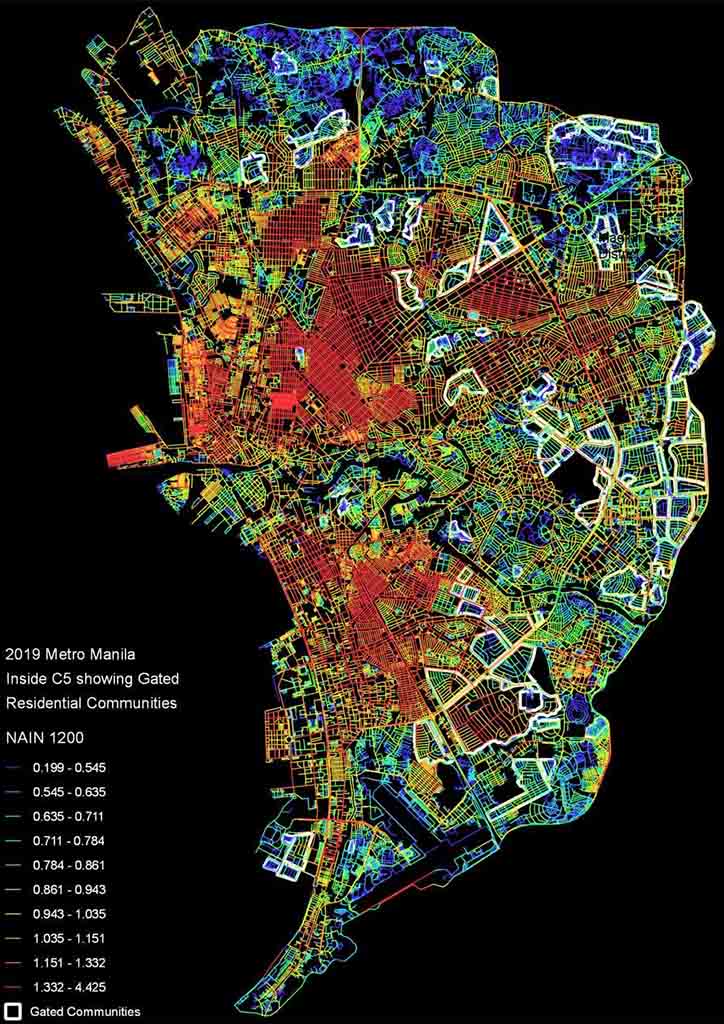
I’ve previously posited that the starting domino to push Metro Manila LGUs into providing bike lanes is persuading toll road operators to open them along highways and expressways from Metro Manila’s southern and northern suburbs. This single point of control would cascade the need for cycle lanes to all connected LGUs. As advocates of socio-spatial justice ask: Who has the right to the infrastructure being funded by taxpayers? Who, when the majority of taxpayers (and we are all taxpayers because of VAT), do not own a car?
Response: Retrofit the slums
Urban planning advocates have likewise used the pandemic to push for tactical solutions to help make slums livable—water stations, health or clinic outposts, roving markets for residents unable to travel to retail, etc. These are important retrofits that try to resolve symptoms, but not necessarily the root causes of the problem: the spatial marginalization of these settlements (See Fig.9) and the failure of both the market and the government to develop dignified and livable in-city housing for informal settlers.
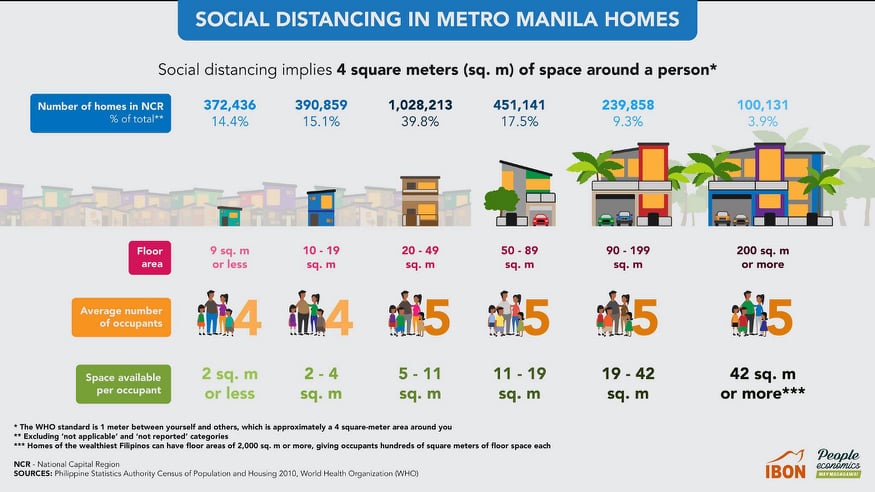
READ MORE: Regenerating Informal Settlements
Response: More e-Commerce
The rise of networked delivery services is a manifestation of how inaccessible our residential areas are from where we shop and buy. In most of Metro Manila, one cannot walk to a proper grocery or supermarket (Poco, 2019). In a way, the sari-sari store is a canary-in-the-coalmine of sorts. They indicate the demand for something close-by which retailers have not addressed because of the logistical challenge of providing inventory in dispersed settlements.
The pandemic’s social distancing and quarantining requirements have pushed e-commerce to more users who can afford the added costs, even those not as tech-savvy as millennials, Gen Y, and Gen Z. Shopping malls and supermarkets will not necessarily become obsolete post-pandemic; they will merely evolve into logistics and fulfillment centers for last-mile distribution of retail purchases.

The economies of scale differ when you pass the burden of mobility to the end-user (by car or other transport). It isn’t a stretch to imagine the market weighing the risks of buying at the mall against opening up small but adequately stocked retail outlets with fresh food within their neighborhoods. One can dream of scenarios where people walk or bike to do their groceries within their villages. With fewer crowds, they may maintain social distancing, rather than having to brave the one to two-hour queue to get into and out of the large supermarkets.
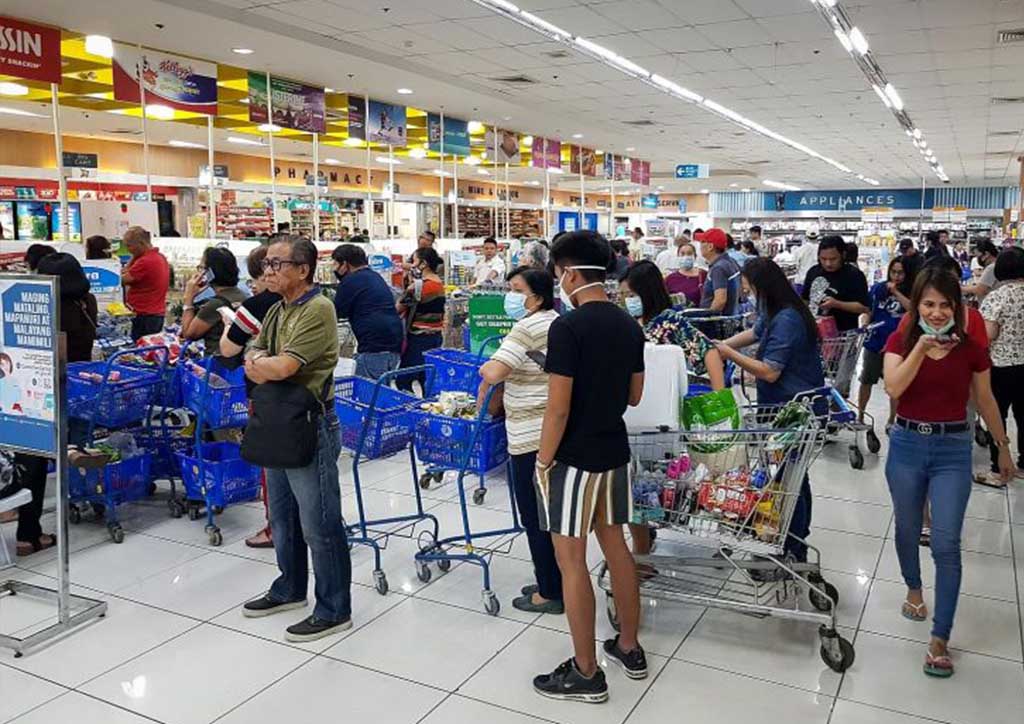
The pandemic’s imposed Work-From-Home (WFH) experiment has proven that it is possible for some senior and management roles. But for everyone else, the challenges for working from home (Leechiu, 2020) include the lack of space and separation during work hours; the lack of roof insulation and high cost of comfort cooling; and patchy Internet speeds. For companies, the problems are confidentiality and data security issues, slow hardware, and software licensing limitations. Leechiu Property Consultants points to how all these, along with the challenge of communication and coordination, make WFH difficult for office rank-and-file. Control issues aside, most white-collar work should doable from home and those who have enjoyed its benefits will likely want to continue the WFH setup post-pandemic.
READ MORE: Reopening during a pandemic: Are architects ready for the new normal?
Response: Active and passive measures for reopening workplaces and businesses
Many businesses, however, will still require employees to physically report for work. This leads to the discussion of architectural proposals on post-pandemic or even pandemic-safe design. Some (SOM, 2020) propose both active and passive measures to adopt within existing structures and to integrate into future developments. What the pandemic did is accelerate the adoption of solutions to the “sick building” syndrome. The US LEED system, Singapore’s Green Mark, and Building Code already have these solutions codified and are enjoying newfound attention because of safety and health concerns.
Tactical active measures include the use of HEPA and UV filters in air conditioning ducts, contactless technologies for switches and faucets, smart systems to monitor indoor air quality, IR cameras for temperature scanning, automated disinfection booths, etc. These technological solutions and innovations will entail costs to introduce or retrofit into facilities.
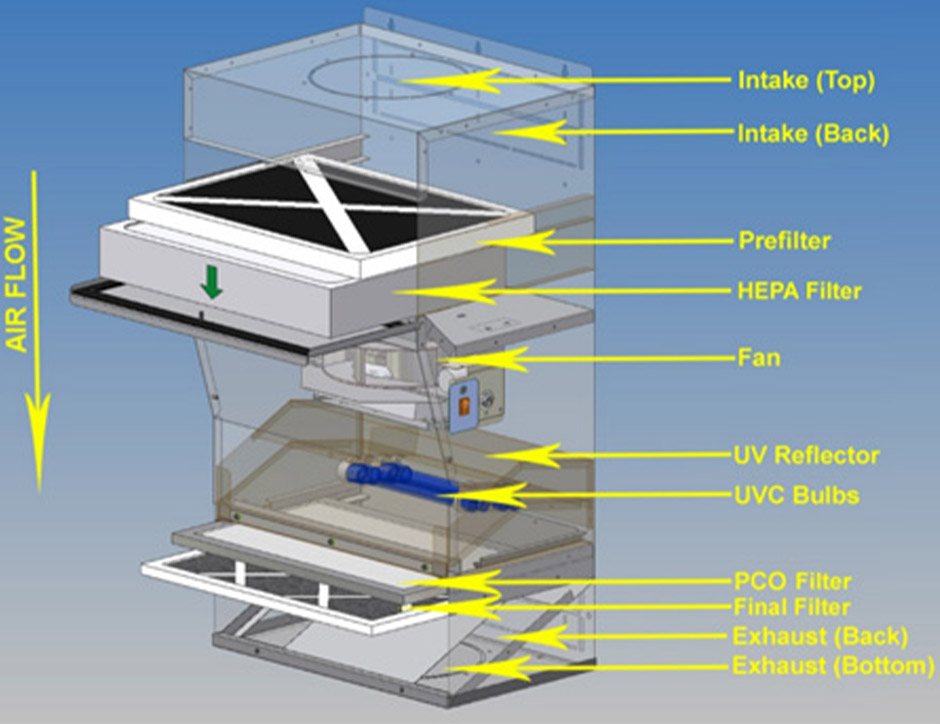
Recommended passive measures include: limits on lift capacity (1-to-a-corner only, for a total of four people per lift journey); use of stairs for lower stories; one-way circulation corridors to avoid collisions; entrance and exit doors for lobbies, restrooms, etc.; taller partitions for cubicles; user density controls; reuse of meeting areas and conference rooms into partitioned workstations; more operable windows for natural air; naturally ventilated stairways; and skylights to let cleansing UV radiation in (SOM, 2020).
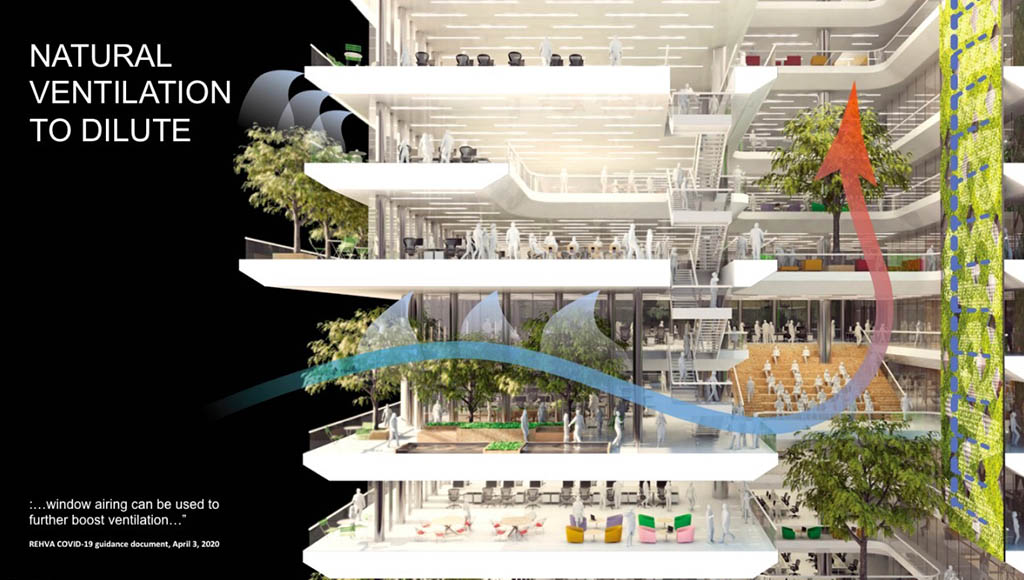
Evidence-based planning and design as a way forward
Most of the above measures should be considered for quick implementation as we try to restart the economy and get back to work. The proposals are well-meaning, but most recommend guidelines and practices from Western standards like the US LEED system.
There is an urgency, therefore, to test the effectiveness of these measures in our local contexts for the long-post-pandemic-term. Could this usher in interdisciplinary research and collaboration between local architects, HVAC/mechanical engineers, doctors, and public health specialists? This could be a new research avenue for our institutes of higher learning, funded by private sector developers and builders. The insights gleaned from such research could supplement our designers’ talent with evidence-based design. This would benefit more people than the image-driven agenda, authorship-focused design, and starchitecture pedagogy that dominate our industry today.
Building sciences have long been the domain of Western universities. It’s time to create our own research network, not just to replicate and test findings, but to localize them into our climate and culture, and to put forward sensible, less-technology reliant methods. Our centers of excellence need to be acknowledged on the world stage. And inevitably, they have to play the rankings game through research output, presentations, and citations.
The above proposals by architects and planners need to be sieved and critically inspected. The gist of their recommendations shows that with active and passive interventions, we can mediate pandemic risks, thereby returning us to some form of normalcy.
Who’s paying for all these pandemic safety measures?
Architects and planners are creatively omnipotent on paper. But we are powerless and without agency without the clients who build and on whom we rely for our livelihoods. The designer’s message has to stay positive for this audience. He must show them their business models can be adapted, that production can continue, and that markets can be tapped even amid a pandemic.
That being said, expertise is not value-neutral. We acknowledge the prosperity and quality of life that capitalism has brought to the world. But we should also know the flaws of the neoliberal capitalist framework that have brought us to our current situation. The flaws of unequal opportunity; the oligarchic and monopolistic control of power, territory, and resources; and climate-changing pollution.
Interests collide: Health and wellness versus profits
We must critically assess the narratives that our experts and high priests of design put forward: the 15-minute Live-Work-Play communities; the less dense offices; lower density floor plates; less-efficient floor plans; breathing and permeable building envelopes; thicker ingress and egress due to inspections, scanning, and decontamination; buildings less reliant on elevators and air conditioning; the provision of natural light; and so on.
As architects and planners serving the capitalist built environment, we are handmaidens to market efficiency. But what are all the above tactical measures telling us? They are whispering from beneath the weight of capital initiative that we must deconstruct the value system that created the CBD and its car-centric, capital-friendly, hyper-efficient, deep-floor-plated, curtain-walled jewel boxes (DeGraaf, 2017).
The big question is: Will capitalism accept these planning and design responses to the coronavirus pandemic? Will capitalism change its heart from its cold assessment of our raw product—space, its configuration, and its enclosure—and accept a deconstruction of its premises?
For that matter, how many architects and planners have the capability to help their clients reenvision projects to afford these new costs? How many will still stick their necks out to propose implementing these life-saving changes even when the economics no longer works as well for the clients?
Or do we leave it to the market to do that?
In a post-pandemic world, the market should—and will—make its voices be heard with their feet, by opting out when they can, until public places and workplaces adapt and change to the new normal. Only then will people feel confident about once again entering the public realm.
Such a claim sounds like misplaced optimism—at least in the Philippines, whose citizens, we, her workers and consumers, seem to have no choice but to make the best with what we are given. On the other hand, why not? Is a pandemic not the most opportune time for all of us to push for built environments that promote our health and wellbeing?
Shared values: Where interests may meet
We need a drastic reassessment of the values system that governs our built environment and our very lives. As powerless yet omnipotent creators of worlds on paper, that is what we must ask ourselves, our society, our government, and our clients. It is not just a deconstruction of the mind and the desire to quantify and maximize profit over loss. We must also pry open and examine our cold hearts that place a monetary value on our fellowman. It is time we deconstructed the fences, barriers, and rules we ourselves have designed to keep others out.
My fervent hope is that post-pandemic capitalism’s next evolution understands that by safeguarding everyone’s welfare, we also enlarge prosperity for all. We all—the big and the small, the strong and the weak, the famous and the forgotten—stand to gain. Only then can we heal and progress as one.
The author:
Leandro Nicholas Rañoa Poco completed MSc Space Syntax: Architecture and Cities degree at the University College London’s Bartlett Faculty of the Built Environment. He completed his MA in Urban Design at the National University of Singapore in 2008. A Philippine-registered architect and environmental planner, he has over 12 years’ practice in Manila and Singapore. He is a partner with Leonardo A. Poco & Associates, Architects, and has a keen interest in Metro Manila’s urbanism. He believes that evidence-based planning and design are key to improving Metro Manila’s dystopia and addressing her residents’ discontent.
PoCo Built Environments
Leonardo A. Poco & Associates, Architects
References
Corbusier, L., (1910). Plan Voisin, Paris, France, 1925, [“Ici, tout a coup, on est devant une charmante eglise gothique, bercée par les feuillages; C’est St. Martin ou St. Merry du XIXme ou du XVme siècle.”]. Le Corbusier et Pierre Jeanneret. Oeuvre complète, 1929, pp.1910-1929.
Dalio, R. (2020), Questions, tips, or inquiries of any kind. HYPERLINK “https://heisenbergreport.com/2020/03/30/ray-dalio-what-is-happening-now-would-have-been-unimaginable-not-long-ago/comment-page-1/” https://heisenbergreport.com/2020/03/30/ray-dalio-what-is-happening-now-would-have-been-unimaginable-not-long-ago/comment-page-1/. Date Accessed: 22 May 2020
De Graaf, R. (2017). Four walls and a roof: The complex nature of a simple profession. Harvard University Press.
Hillier, B. and Netto, V. (2002). Society seen through the prism of space: outline of a theory of society and space. Urban Design International, 7(3-4), pp.181-203.
Leechiu Property Consultants (2020). 2020 1Q MEDIA BRIEFING. Date Accessed: 22 April 2020
Lefebvre, H., (1978). De l’état (Vol. 4). Union générale d’éditions.
Roubini, N. (2020). A Greater Depression. Project Syndicate, 24.
Poco, L. (2019). Enclave Sub/Urbanism (Part II). An Assessment of the Present-Day Spatial Configuration of Metro Manila’s Centres of Exclusion and their Surrounding Fabric. Paper presented to the PIEP National Convention.
Skidmore Owings and Merril, (2020). SOM COVID STRATEGIES IN THE CITY. Urban Land Institute Webinar.
Stonor, T. (2020). 23 March. HYPERLINK “https://twitter.com/Tim_Stonor/status/1241773601386385408” https://twitter.com/Tim_Stonor/status/1241773601386385408. Date Accessed: 22 May 2020.



